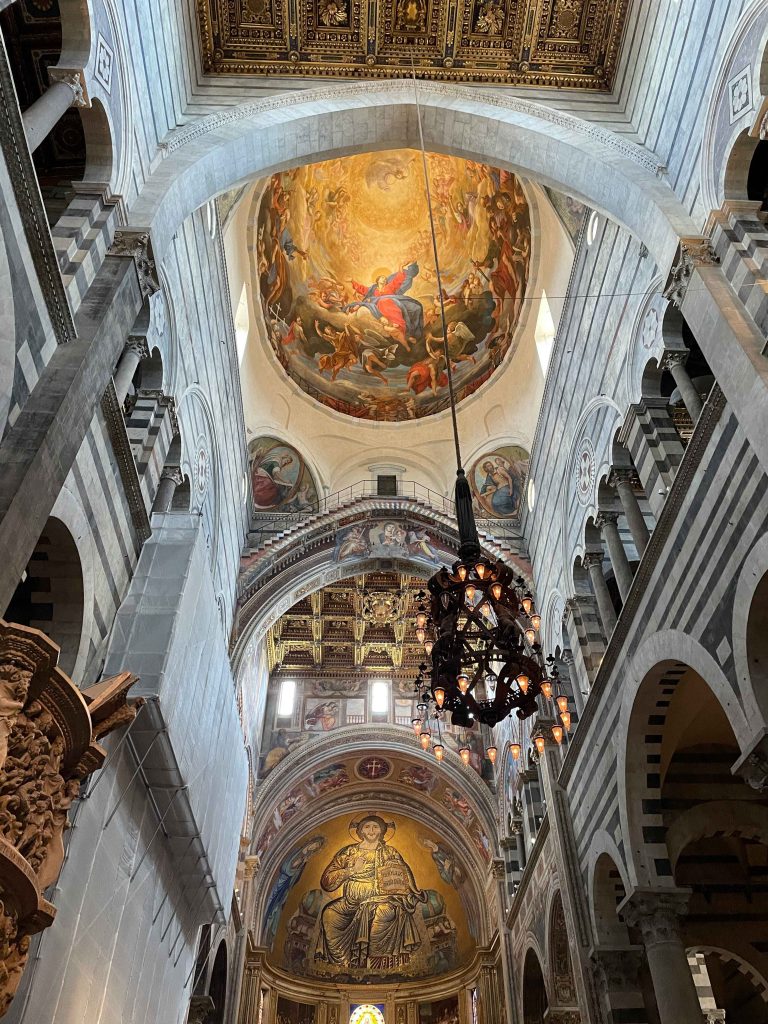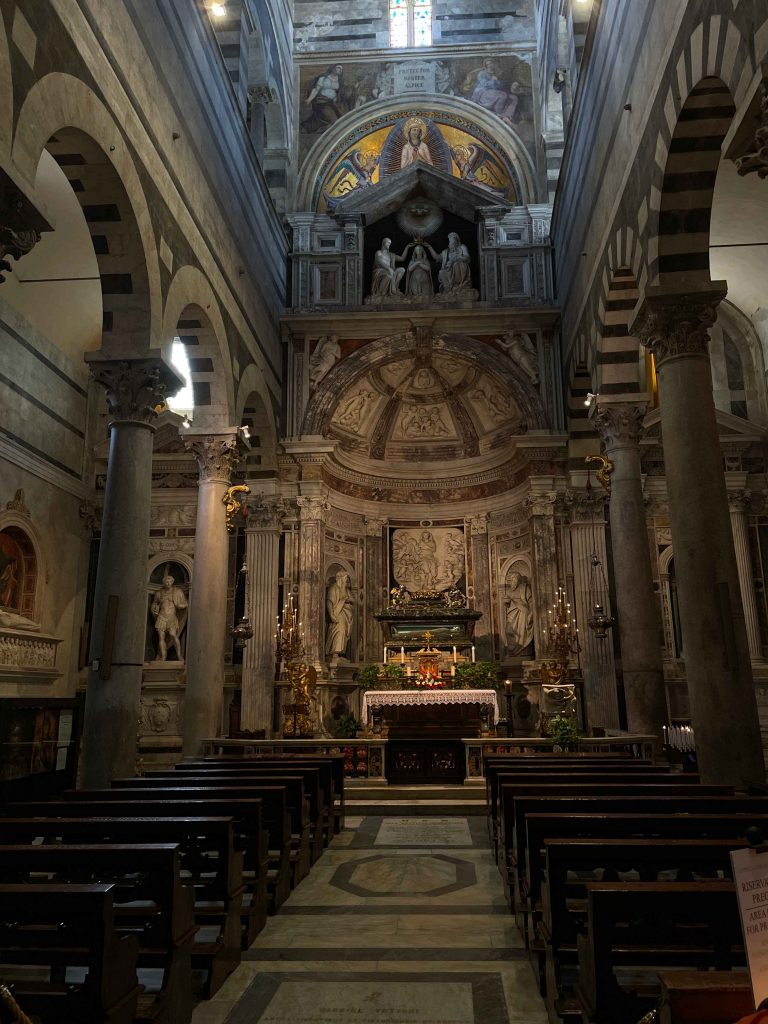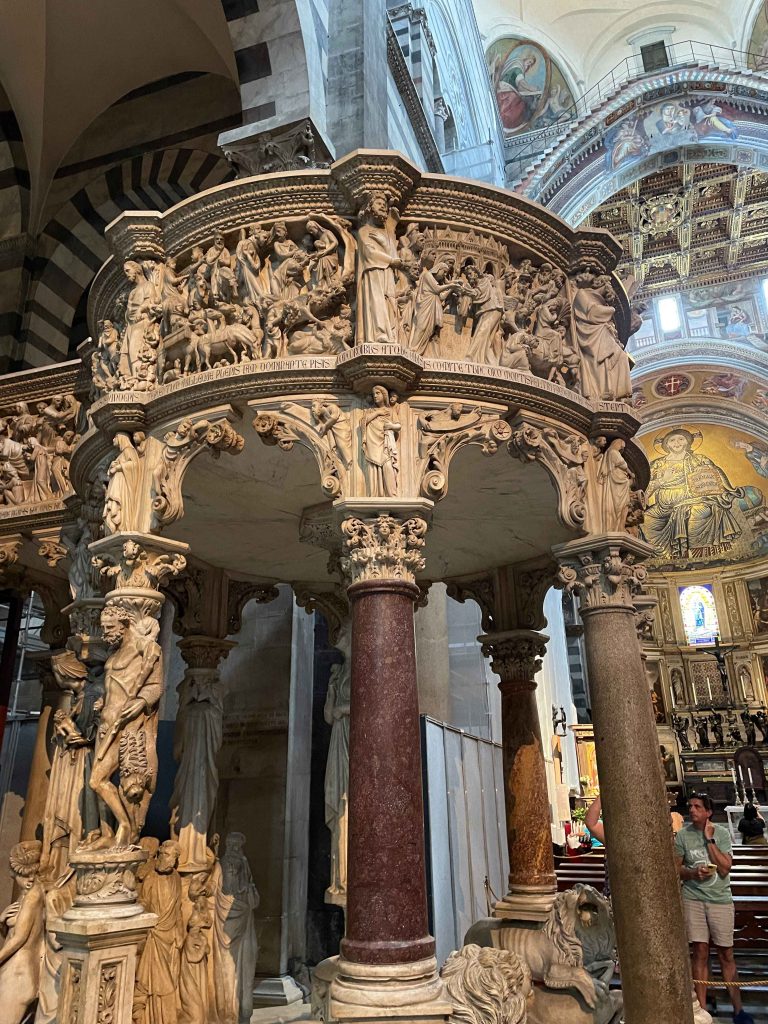Trip to Pisa
As part of the Italy study abroad trip, students participate in pre-planned trips to a few famous and historical cities throughout Italy. The first trip is in Pisa, giving students a chance to explore the historical city and experience the famous Leaning Tower of Pisa. The trip included tickets into the Pisa Baptistry and Cathedral, as well as time to take the iconic photos with the Leaning Tower of Pisa. Afterwards, students were given the opportunity to explore and shop. Some students went through the street markets while others tried some delicious Italian dishes.
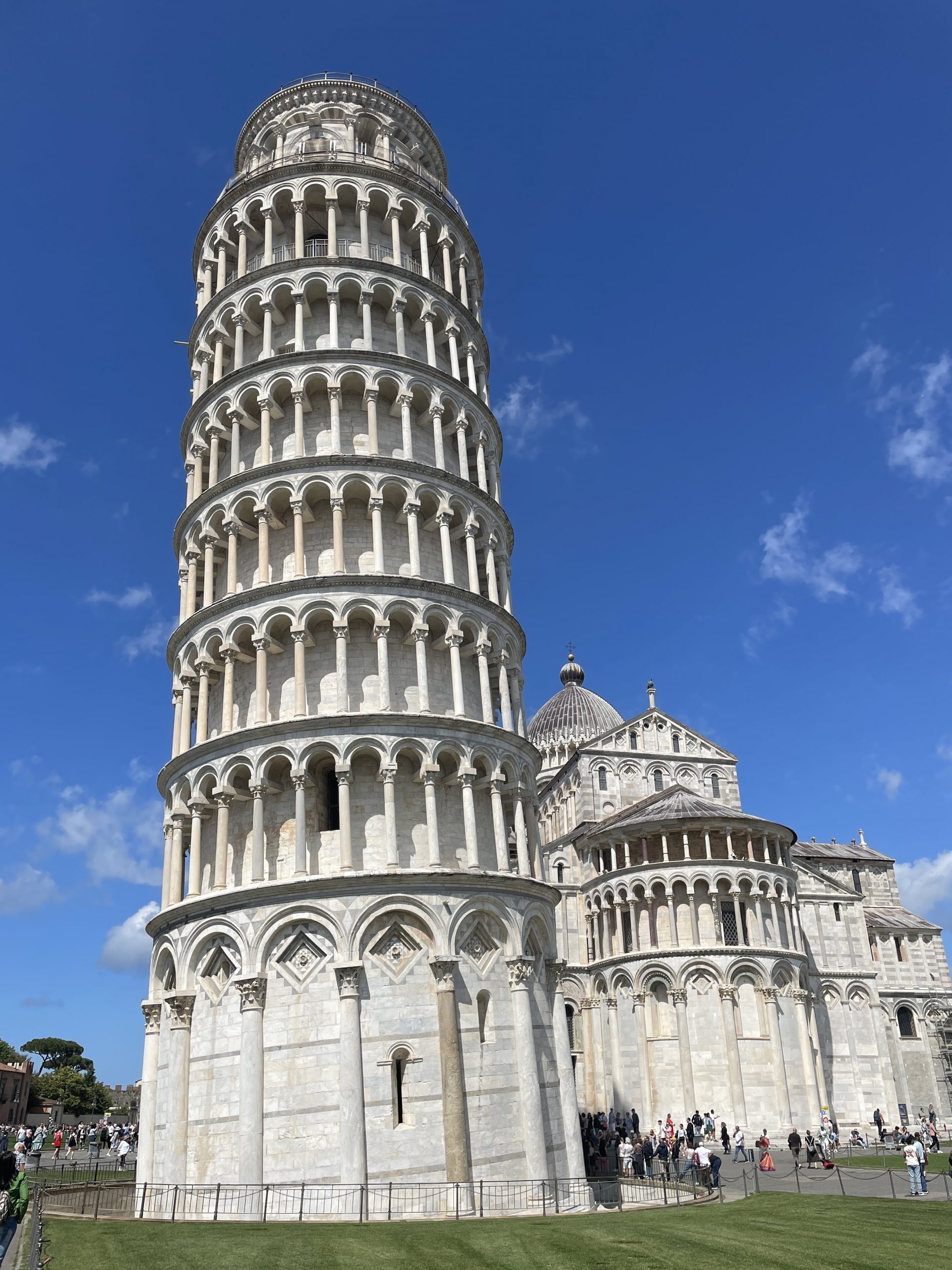
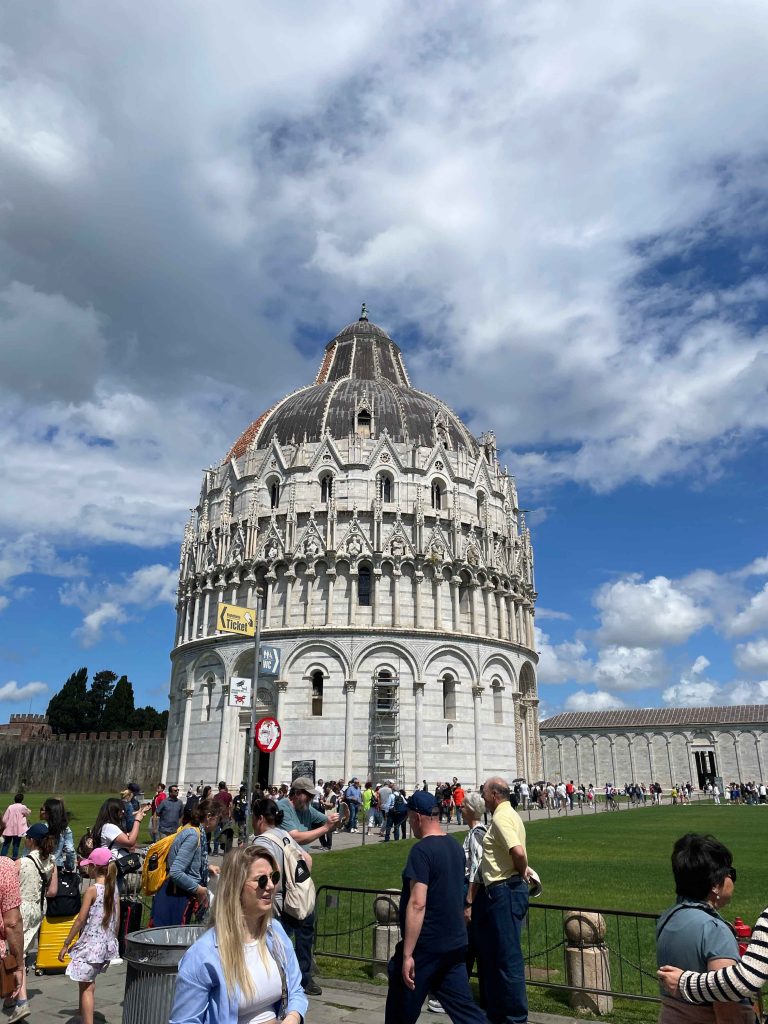
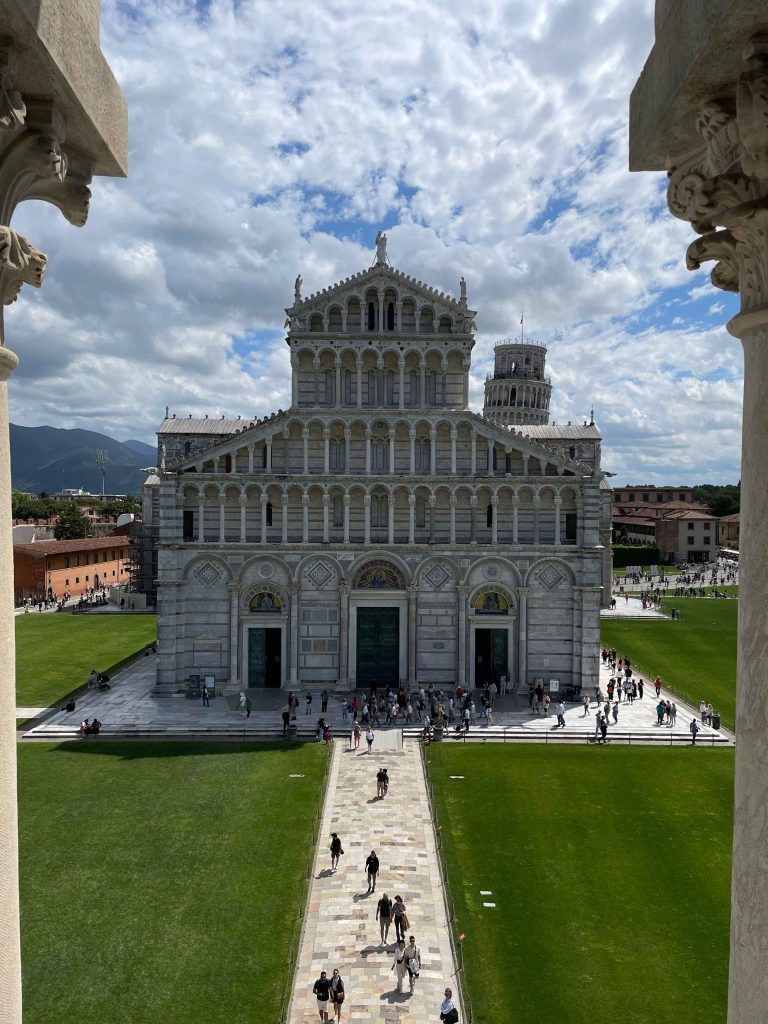
The first stop on the Pisa trip was to the Leaning Tower of Pisa. While the students did not go inside the tower, they spent some time outside looking at architectural aspects of the tower and marveling at its crazy leaning angle. They had a good time taking the iconic photos with the tower and watching the other tourists too.
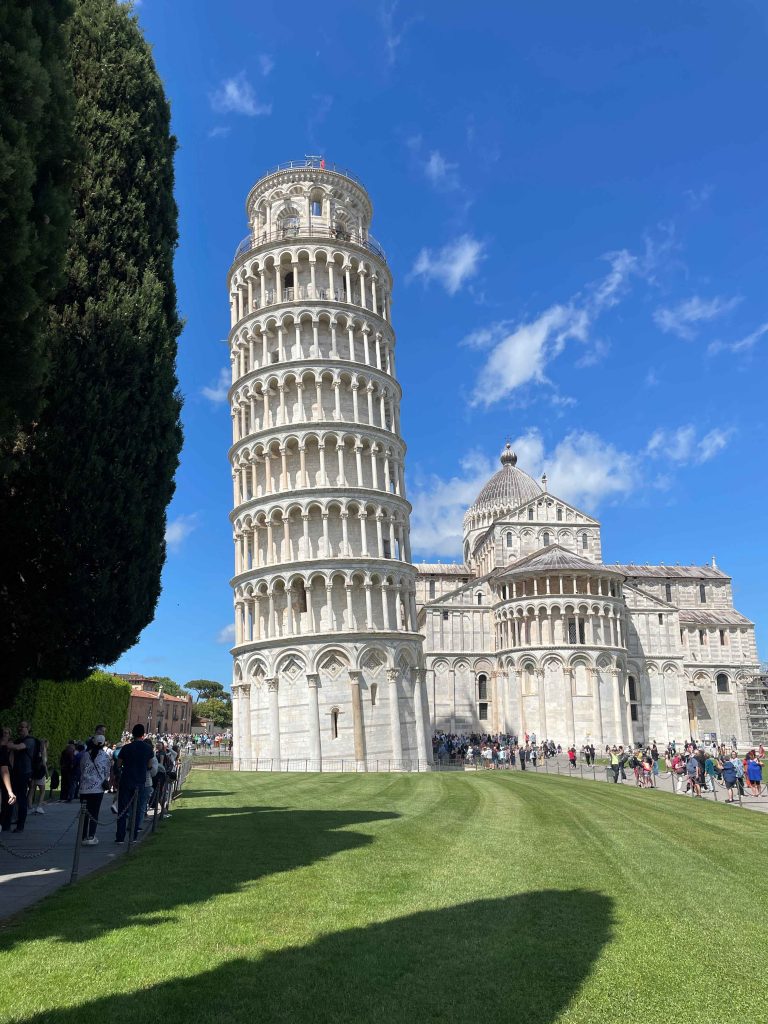
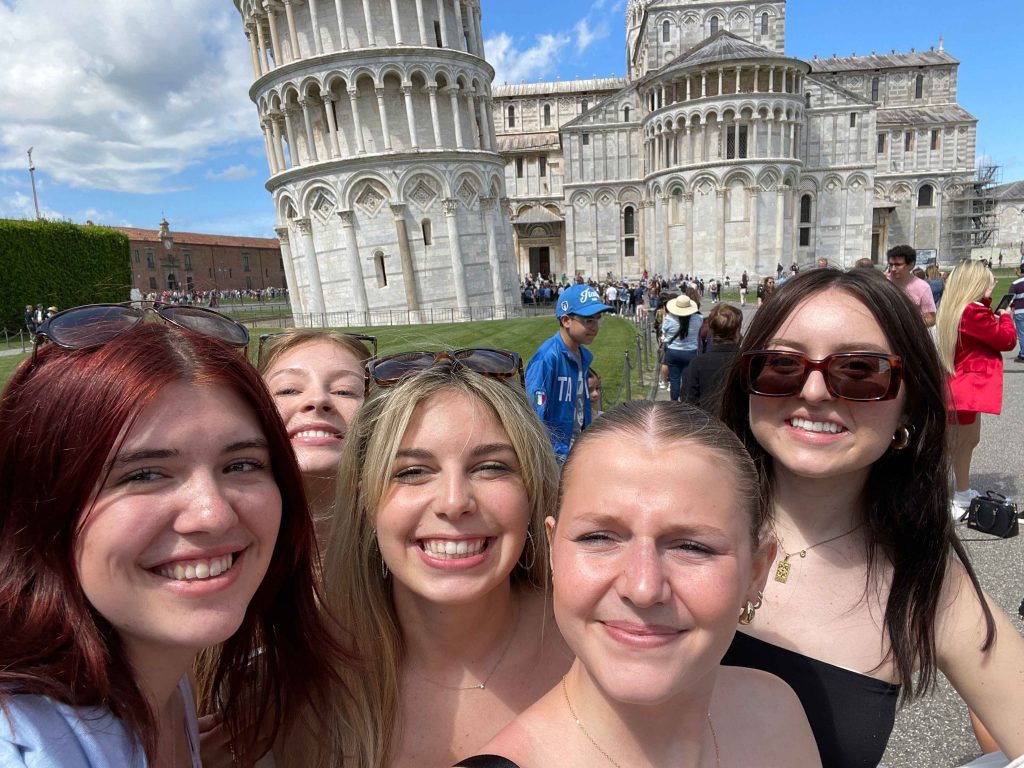
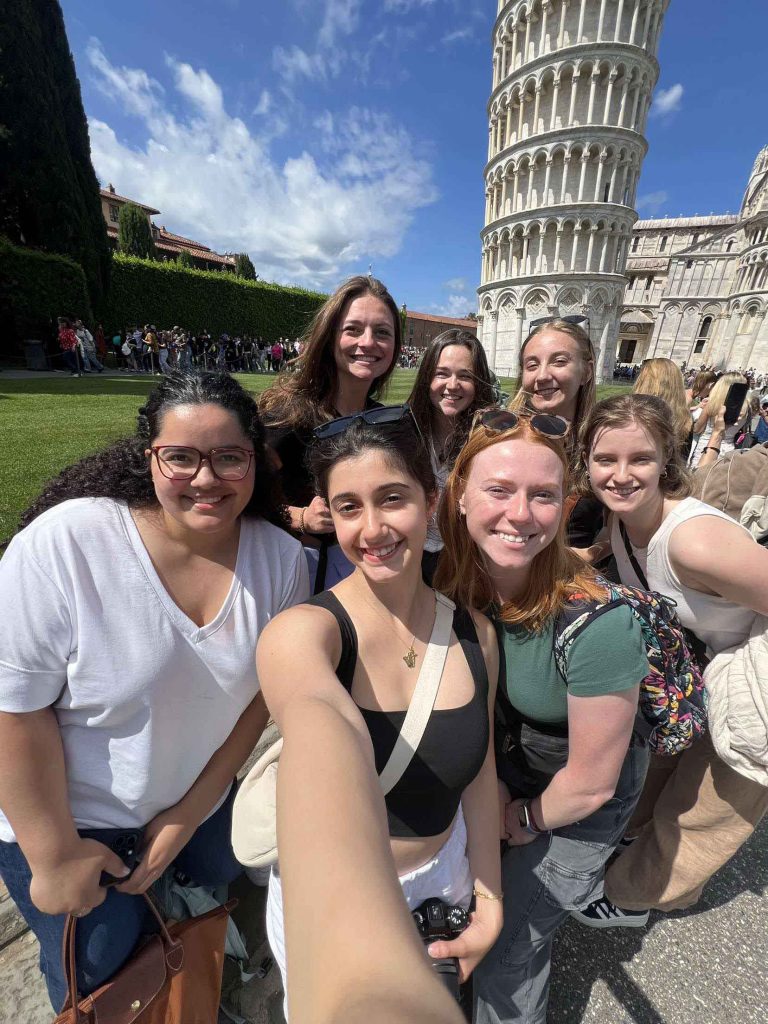
The baptistry of Pisa is described as a beautiful example of Romanesque architecture. Located adjacent to the Leaning Tower and Cathedral of Pisa, this structure is dedicated to St. John the Baptist and is the largest Baptistry in Italy. As the second stop on the field trip, students spent the time in the baptistry learning about its historical significance and its architectural design that made it a renowned structure.
The Baptistry is known to incorporate different architectural features from the Romanesque and Gothic eras. Its circular shape and use of white and grey marble stand out against the rest of the city’s palette. Due to its circular shape and dome ceiling, the baptistry is known for its outstanding acoustics. The dome creates a unique echo effect, which can sometimes be heard by the staff members who will sing a few notes to demonstrate its remarkable sound.
This baptistry is one of many that the students will explore and be able to compare each one with the others to discern the different eras and styles used to design them.

After the Baptistry, the students explored the Cathedral of Pisa. The Cathedral is part of the group with the Tower and Baptistry. It represents the Romanesque architecture, however during its construction it began to blend different styles of architecture including Roman, Byzantine and early Christian architecture. Inside the Cathedral, students learned about its historical and architectural significance, with a focus on the structural design.
An important stop inside was the pulpit which sat on the left side of the central nave in the Cathedral. The pulpit was where the preacher would stand to give sermon because of the acoustics in the building. It allowed for sound to be carried better throughout the church and gave everyone a better view of the preacher. The pulpit was decorated with stories from the bible, including Jesus’ birth and death. Afterwards students were given time to wander around and spend time with the artworks that covered the interior of the cathedral.
